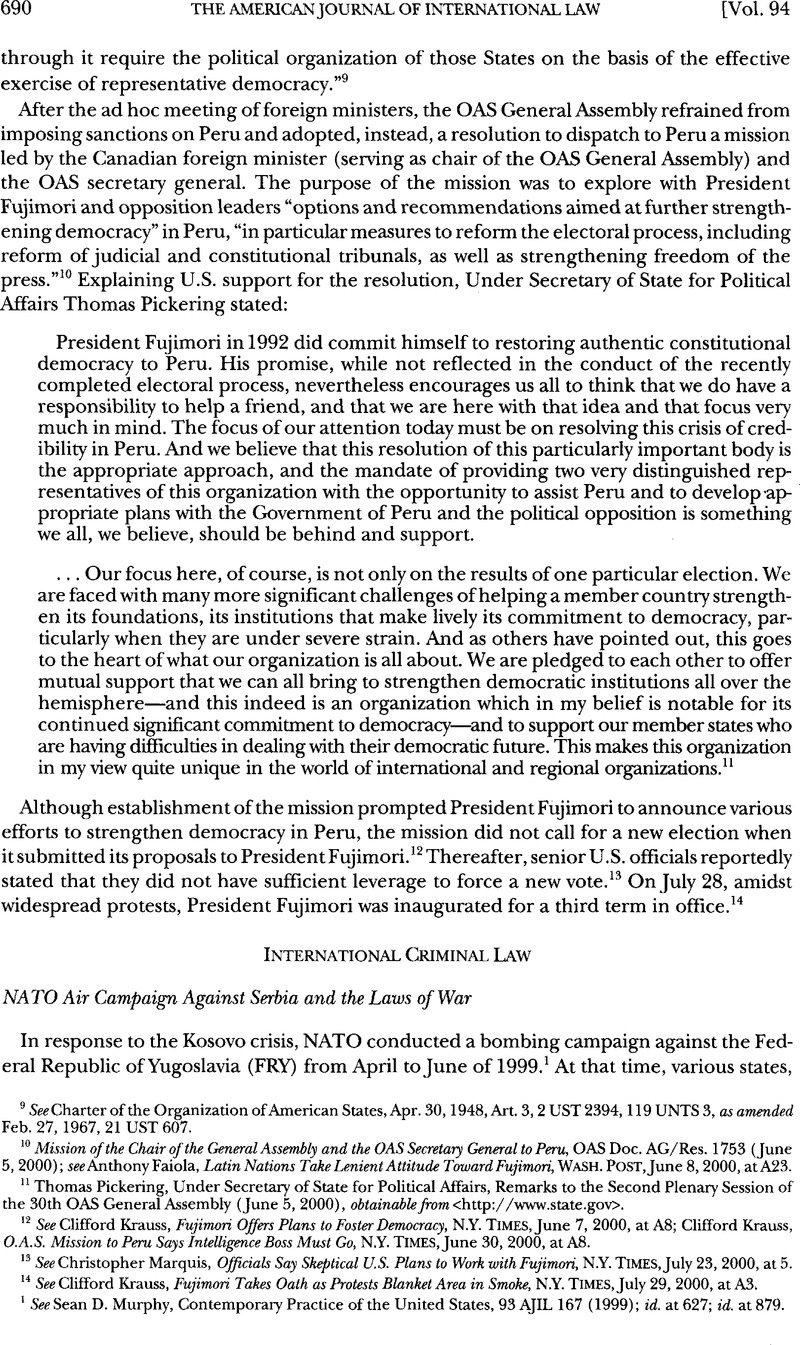No CrossRef data available.
Published online by Cambridge University Press: 10 March 2017

1 See Murphy, Sean D., Contemporary Practice of the United States, 93 AJIL 167 (1999)CrossRefGoogle ScholarPubMed; id. at 627; id. at 879.
2 See ICTY Press Release on Prosecutor’s Report on the NATO Bombing Campaign (June 13, 2000), obtainable from <http:www.un.org/icty/>.
3 See UN Doc. S/PV.4150 (June 2, 2000).
4 See FRY Ministry of Foreign Affairs, NATO War Crimes in Yugoslavia (June 22, 1999), obtainable from <http://www.mfa.gov.yu/bela/index.htm>.
5 See ICTY, Final Report to the Prosecutor by the Committee Established to Review the NATO Bombing Campaign Against the Federal Republic of Yugoslavia, ¶ 90 (June 13, 2000) (citation omitted), reprinted in 39 ILM 1257, 1283 (2000), obtainable from <http://www.un.org/icty/>.
6 [Editor’s Note: Protocol Additional to the Geneva Conventions of August 12, 1949, and Relating to the Protection of Victims of International Armed Conflicts (Protocol I),June 8, 1977, 1125 UNTS 3, reprinted in 16 ILM 1391 (1977). The United States is not a party to this protocol.]
7 Amnesty International, “Collateral Damage” or Unlawful Killings? Violations of the Laws of War by NATO During Operation Allied Force §4 (June 2000) <http://www.amnesty.org/ailib/aipub/2000/EUR/47001800.htm> (footnotes omitted). The report’s findings are similar to those in a report released by Human Rights Watch in February 2000. Human Rights Watch, Civilian Deaths in the NATO Air Campaign (February 2000) <http://www.hrw.org/reports/2000/nato/>.